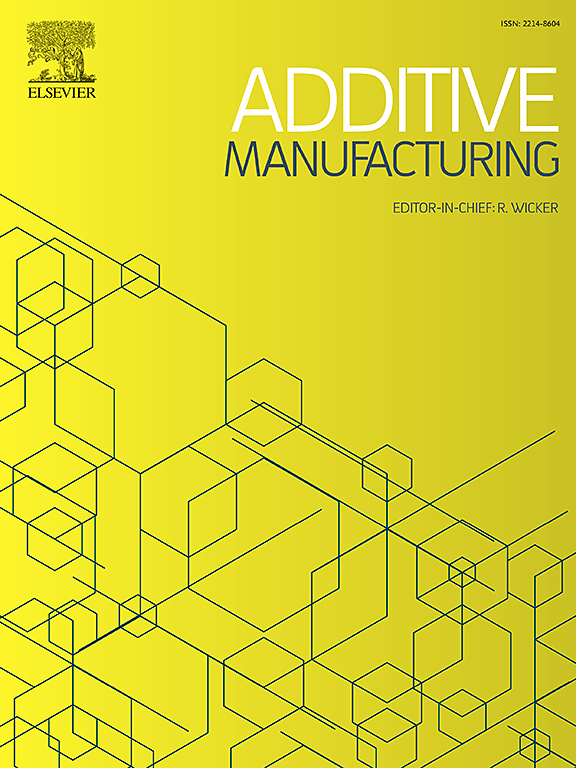Generating new cellular structures for additive manufacturing through an unconditional 3D latent diffusion model
IF 10.3
1区 工程技术
Q1 ENGINEERING, MANUFACTURING
引用次数: 0
Abstract
Advances in additive manufacturing (AM) have facilitated the fabrication of cellular structures inspired by those in the natural world. But the design of complex, tessellating cellular structures remains a challenge for human designers, and only a small number of geometries, defined either by connected walls or struts, or by surface equations, have been investigated. This study introduces generative deep learning to the problem, with the aim of synthesising novel cellular geometries producible by AM. Our unconditional 3D latent diffusion model (U3LDM) explores the design space from a new class of training data comprising 10,650 unit cells. A critical task involved developing a varied set of cell geometries based on random permutations of trigonometric surface equations. This was coupled with a stringent set of pass/fail tests to ensure the generated structures possessed structural connectivity and could tessellate in 3D. The new cellular structures were analysed numerically using finite element analysis, fabricated by polymer AM, and subjected to compression tests to verify their manufacturability and mechanical properties. Results indicate that the U3LDM is capable of generating new ‘unseen’ cellular structures with geometries and mechanical properties consistent with those of the training specimens. This method also demonstrates the potential universal technique for creating nature-inspired and AM-manufacturable structures beyond the currently limited set of human-derived geometries.
通过无条件三维潜在扩散模型为增材制造生成新的细胞结构
增材制造(AM)的进步促进了受自然界启发的细胞结构的制造。但是设计复杂的、镶嵌的细胞结构对人类设计师来说仍然是一个挑战,只有少数几何形状,由连接的墙壁或支柱定义,或由表面方程定义,已经被研究过。本研究将生成式深度学习引入该问题,目的是通过AM合成新的细胞几何形状。我们的无条件三维潜在扩散模型(U3LDM)从包含10,650个单元格的新一类训练数据中探索设计空间。一项关键的任务是根据三角曲面方程的随机排列,开发一套不同的细胞几何形状。这与一组严格的通过/失败测试相结合,以确保生成的结构具有结构连接性,并可以在3D中镶嵌。采用有限元方法对新型细胞结构进行了数值分析,并对其进行了压缩试验,以验证其可制造性和力学性能。结果表明,U3LDM能够生成新的“看不见的”细胞结构,其几何形状和力学性能与训练样本一致。该方法还展示了潜在的通用技术,用于创建受自然启发和am制造的结构,而不是目前有限的人类衍生几何形状。
本文章由计算机程序翻译,如有差异,请以英文原文为准。
求助全文
约1分钟内获得全文
求助全文
来源期刊

Additive manufacturing
Materials Science-General Materials Science
CiteScore
19.80
自引率
12.70%
发文量
648
审稿时长
35 days
期刊介绍:
Additive Manufacturing stands as a peer-reviewed journal dedicated to delivering high-quality research papers and reviews in the field of additive manufacturing, serving both academia and industry leaders. The journal's objective is to recognize the innovative essence of additive manufacturing and its diverse applications, providing a comprehensive overview of current developments and future prospects.
The transformative potential of additive manufacturing technologies in product design and manufacturing is poised to disrupt traditional approaches. In response to this paradigm shift, a distinctive and comprehensive publication outlet was essential. Additive Manufacturing fulfills this need, offering a platform for engineers, materials scientists, and practitioners across academia and various industries to document and share innovations in these evolving technologies.
 求助内容:
求助内容: 应助结果提醒方式:
应助结果提醒方式:


